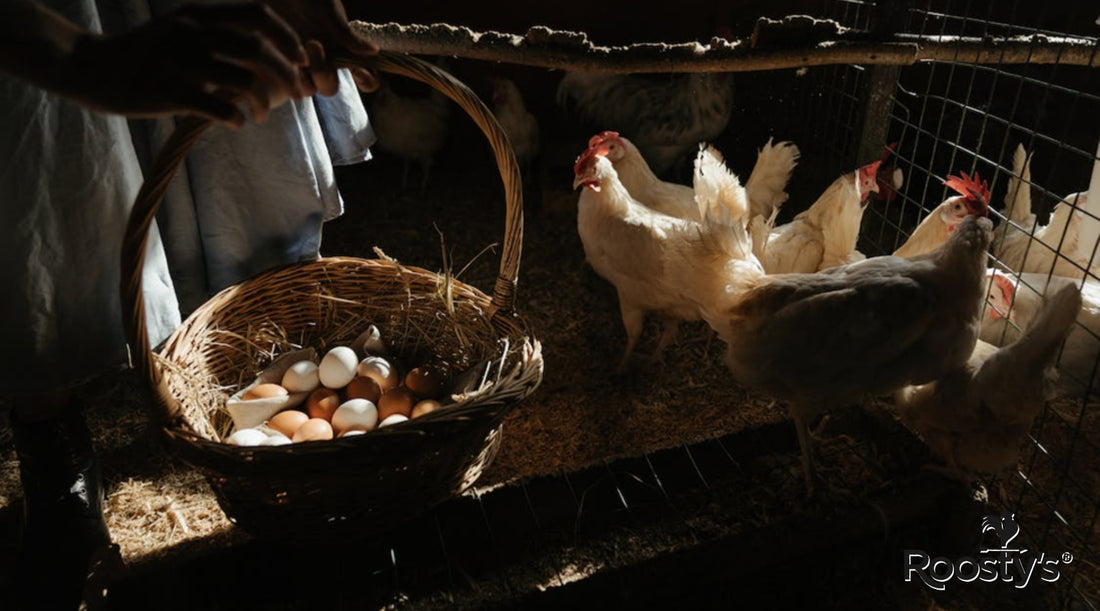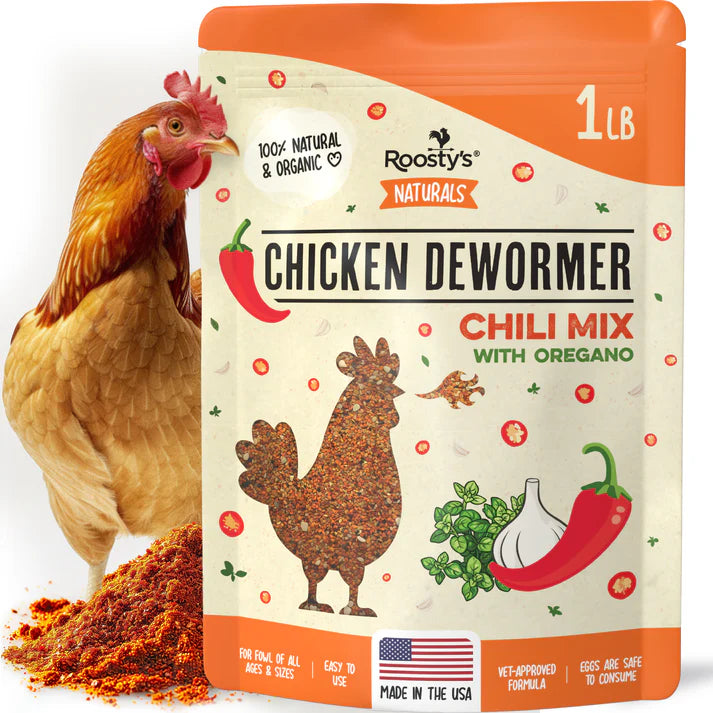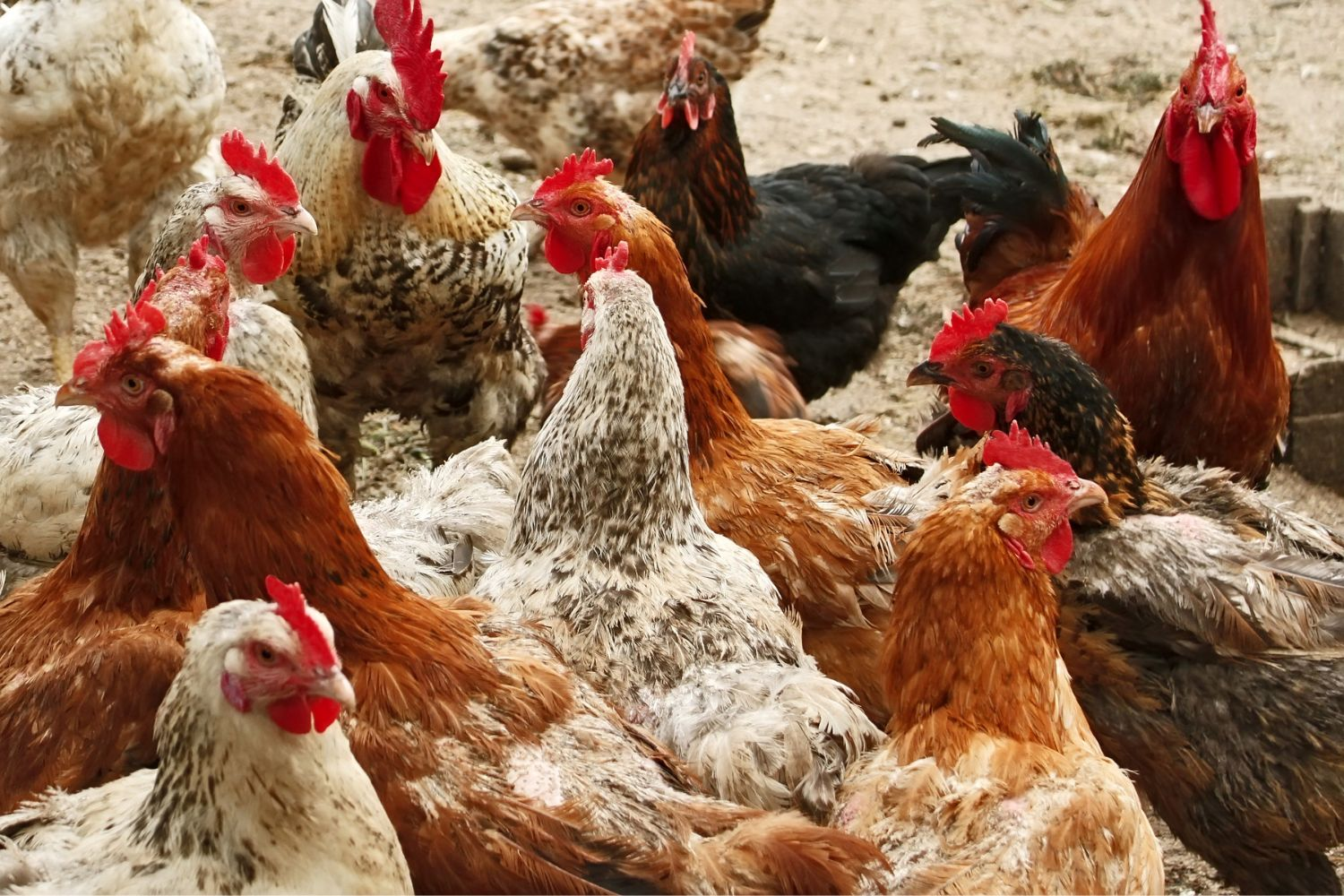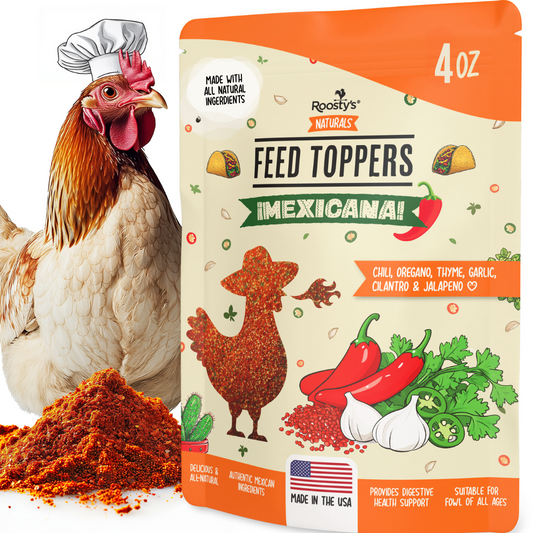
20 Chicken Coop Plans: Design Your Ideal Chicken Coop for Optimal Space

20 chickens…that’s a lot of chickens!
I admire your spirit as it certainly isn’t easy to look after this many hens. The biggest problem is space - where are you going to house 20 chickens?!
Yes, you can let them be free-range, but they still need somewhere to come inside when it’s wet and cold; a safe place to lay their eggs. If you wanted to buy a 20-chicken coop with a run, it’s going to cost a fair bit.
Instead, your best bet is building one from scratch. I’m going to make this a tiny bit easier by showing you some of the best chicken coop plans for 20 chickens I can find. I’ll link to the plans as well, so you’ll have a full breakdown of everything needed.
From here, you can pick whatever chicken coop plan for 20 chickens you like the most, and start building it. I’ll even throw in some extra info on what’s needed inside your 20-chicken coop, so it’s perfect for your flock!
Free Chicken Coop Plans For 20 Chickens
I’ve searched the web and found a good selection of free chicken coop plans for 20 chickens.
Keep in mind, the plans are the only thing free. You still have to go out and get all the materials and tools to build them.
Here are the best options:
The Cluck Canyon Chicken Run
This is a highly popular option from Easy Coops that will easily house 20 chickens and provide a massive run area. It claims to be a beginner-friendly build, so it’s a fantastic idea if you’ve never built a large chicken coop before.
The extract dimensions are 9x42 feet - and that’s inclusive of the chicken coop and run. It’s a very nice and modern chicken coop design, giving you a spacious indoor area that almost resembles a garden shed. There’s even a little area on the outside where you can collect eggs from the nesting boxes.
Perhaps the standout feature is the large run area, giving your chickens more than enough room to run around and stretch their legs/wings. It’s completely covered and fenced off too, protecting your flock from predators and the elements.
Find the full PDF chicken coop plan here.
The Chicken House
I’ve got another option from Easy Coops, but this one is only a chicken coop. It’s another beginner-friendly plan too, with some very simple steps to follow.
The concept behind this chicken coop plan for 20 chickens is to give your flock a safe and enclosed environment to live in. The design very much resembles a lovely shed, complete with a door for you to walk in and pay your chickens a visit.
It’s an 8x12 feet chicken coop plan, so it comfortably fits 20 average-sized chickens - and can get up to 24 in there, to be honest. If you already have a fenced-off area to use as a chicken run, or you want your chickens to be free-range hens, then this is a brilliant option to consider.
Obviously, if you’re looking for chicken coop plans for 20 chickens with a run included, it won’t be for you.
For the entire chicken coop plan, click here.
Sunrise Chicks Chicken Coop
Next up, we have the Sunrise Chicks Chicken Coop that’s large enough to accommodate plenty of big chickens. It’s primarily a wooden coop construction with concrete blocks elevating it slightly above the ground. There’s a cute little chicken door on the front with a ramp that lets your flock meander in and out of the enclosed coop area.
It’s a relatively simple build that doesn’t require much experience or a great deal of materials. You can also choose to add a run to this, the one given in the plan is pretty massive, totaling at around 40x60 feet. If you have this much space for your chickens to run around, then it’s a fantastic option to add on.
Otherwise, you can build your own chicken run area to suit your requirements.
I really like the nesting box design with this coop. They sit on shelves so it’s very easy to slide them out and clean them. Hens enter from one way and the eggs can be taken from the other. Little design ideas like this make your life easier!
To see the chicken coop in all its glory, and to read through the step-by-step guide/plan, check out BackYard Chickens.
The Mulligan
The Mulligan is a stunning barn-style chicken coop that’s perfect for 20 chickens or more. If you read through the article (which I’ll link later) you’ll see this is actually a barnyard renovation.
Taking old structures and renovating them into chicken coops is one of the most cost-effective and sustainable ways to create homes for your hens!
It’s a very beautiful design with big windows allowing plenty of sunlight in to help the chickens ovulate and make eggs. There’s a run attached to the side too, with plenty of protection for your flock.
This is probably one of the harder chicken coop plans for 20 chickens on our list, but it’s also one of the best looking. If you can get some extra help and follow the instructions detailed in the guide, you’ll be okay. I also love this particular plan as it’s one of the few that breaks down some cool features inside the coop and provides extra space as a brooding room or tool storage area!
Read the entire guide and see the full plans here.
20-Chicken Coop & Run
If you want a modern chicken coop with a decently sized run area that’s protected from predators, this is a fine plan to consider.
It’s an 8x16 feet design, giving you the perfect amount of space for 20 chickens.
I should note, this is one of the smallest plans on our list. It only fits “up to” 20 chickens, so if yours are particularly large breeds or you plan on having more, maybe skip this one.
But, if you’ve got 15 chickens with plans on adding to your flock, it’s a wonderful design to consider. It almost looks like a barn crossed with a shed, plus a lovely covered outdoor area. Again, it features a genius nesting box design that lets you collect eggs without entering the coop. Boxes are built into one wall with openings on the outside for you to easily use without disturbing the hens.
All materials, and the full breakdown of steps, can be found here.
Barn Tractor
This next chicken coop plan for 20 chickens is interesting as it’s a chicken tractor.
What is a chicken tractor? Good question! It’s a type of chicken coop on wheels that can be moved around. The whole area is enclosed, but there’s enough space for chickens to walk around on the grass. Having wheels enables you to move your chickens to fresh patches of grass where they can nibble away.
Why would you consider a chicken tractor? For one, it lets your chickens spend a lot of time outdoors. Secondly - and this is the main reason - it gives your flock access to bugs, worms, frogs, and other creatures hiding in the grassy areas. Why is this beneficial? Because chickens are omnivores and experts suggest that an omnivore diet high in protein can support egg production and produce higher quality eggs.
The ability to move the tractor around means your chickens always have fresh places to search for food.
With that in mind, this barn tractor plan is an excellent choice. It gives you 80 square feet of space in total, which is the perfect amount for 20 chickens. The coop area is still enclosed and has room for all the nesting boxes you need.
Check out drawings, plans, and a walkthrough guide here.
The Chicken Garden
This 100-square-foot chicken coop lets your hens roam free-range while keeping safe.
The large gated-off chicken run area is perfect for helping your hens get the vitamins and nutrients they need for healthy eggs. They receive more than enough daylight, plus the goodness from grazing on your grass.
There’s a big barn-style chicken coop attached to this, with a walk-in door for humans and a small chicken door for the hens. It’s a gorgeous design that’s fairly easy to make and can house up to 25 chickens. So, if you want to grow your flock by a small amount, this is a fine choice.
See a breakdown of the plans and how to build this chicken coop here.

How To Build A Chicken Coop For 20 Chickens
All of the chicken coop plans for 20 chickens listed above will have step-by-step instructions on how to build them from scratch.
Nevertheless, you need to know some of the main considerations when building a structure like this.
Before you start any DIY work, here are the key things you need to build a chicken coop:
- Materials
- Tools
- Outside space
- Good ventilation
- Protection from the outside
What Materials Do I Need To Build Chicken Coops?
While some chicken coops look different from others, you will typically need the same materials for every build.
This includes the following:
- Lumbar - Wood is a popular choice for chicken coop construction as it makes up the frame of the structure. Regardless of the design, some solid lumbar will keep everything in place and provide great foundations for the coop. You may also use some to create nesting boxes or perches for chickens to roost on.
- Plywood - You can substitute this for another type of wood, as long as it can be used outside. This will typically be the material you use to create the walls around the coop. It does a good job of blocking out the elements and keeping the coop warm.
- Roofing materials - Your choice of roofing material is entirely up to you. A lot of chicken coops go for metal roofing panels while others opt for wooden slats like a barn. You could even use shingles or slate tiles - this is a good idea if you have any lying around from a recent home renovation project! Either way, you need a material that stands the test of time and can keep out the rain.
- Metal wiring - This can be chicken wiring or hardware cloth, but both serve the same purpose. You can cover open windows with wiring to ward off predators and pests while improving ventilation inside a coop. Primarily, the wiring will be used around the entire construction if you have a free-range chicken run area. It stops your chickens from getting out and putting themselves at risk and blocks other animals from getting in.
- Window panes (optional) - I’ve put window panes as an optional material because some of you may not use them. If you live somewhere that’s constantly hot, you can have open windows with hardware cloth to prevent the chicken coop from overheating. Alternatively, if it gets cold or there’s a lot of rainfall where you live, windows add another layer of protection and insulation.
What Tools Do I Need To Build A Chicken Coop?
You’ll be happy to know that building chicken coops for 20 chickens won’t require a huge amount of tools. For the most part, these are all you need: A power saw
- A screwdriver
- A hammer
- General garden tools
- A drill
- A leveler
- Wire cutters
- A tape measure
- A pencil/pen
The benefit of downloading and using 20-chicken coop plans is that they provide a list of materials and tools for you. If there’s something special you need, you’ll know before you start the build and get stuck.
How Much Outside Space Do I Need For A 20-Chicken Coop?
A chicken coop for 20 chickens will require a decent amount of space.
The general space guidelines per chicken are 4 square feet of coop space per bird.
This refers to an average-sized chicken. For larger breeds, you should increase the space requirements to 6-8 square feet per bird. If you own any bantam chickens, you can get away with allowing only 2 square feet per bantam chicken.
A flock of 20 chickens will therefore require 80 square feet of coop space in total.
Why does this matter? Because chickens need enough space to move around without feeling claustrophobic or uncomfortable. Chickens & More comments that hens get stressed when they don’t have enough room. A stressed hen is unlikely to lay eggs consistently while also highly likely to exhibit unsavory behaviors. Chickens that are crammed together in a small space are more likely to fight and peck at one another, raising the risk of injuries.
Give your flock the space it needs to feel free and to stretch their wings. This is why allowing room for a chicken run is even more beneficial as it gives extra outdoor space for them to wander around.
How big should a chicken run be? Honestly, it doesn’t matter. What matters is that there’s enough space for them to move around. Aim to have it at least double the size of your chicken coop - but there are no limits on how big it should be.
When looking for chicken coop plans for 20 chickens, always be sure you check the dimensions. The ones I’ve listed all fit the recommended size requirements for a flock of 20, but if you choose to do your own research keep the 80 square feet figure in mind!
Why Do Chicken Coops Need Ventilation?
The obvious answer is to provide enough fresh air for your chickens to breathe while they’re inside.
As noted by Cluckin.net, chicken coop ventilation also helps to remove heat and moisture, along with ammonia fumes.
Imagine you have a chicken coop with absolutely zero ventilation. Okay, that would be unlivable for your chickens, so imagine there’s just one window or door providing air.
What’s likely to happen?
Your chickens are going to create lots of humidity and moisture, which creates a terrible smell inside the coop. The fumes have nowhere to go, so the whole place smells disgusting and creates a highly unhygienic environment.
Proper ventilation allows better airflow and keeps the coop smelling as nice as possible. Will it be the nicest-smelling place on earth? No! It’s a small room filled with chickens that poop everywhere! But, it will be bearable.
Make sure your chicken coop has good ventilation via windows and a couple of doors. Windows are beneficial as you can close them when it gets cold and less ventilation is required.
Keep in mind that your local climate will also influence how much ventilation is needed. If you live in a very hot and humid area, it makes sense to opt for a chicken coop plan with plenty of windows for ventilation.
Why Do Chicken Coops Need Extra Protection?
I have mentioned this a few times already, but protection is necessary to keep your chickens safe from predators.
If you let your chickens range free without any coop, they most likely wouldn’t survive a week.
It’s sad to think about, but that’s nature. Predators exist - and they’re hungry for food. Solid walls and doors that lock at night will keep your chickens tucked away safe from the outside world. The chicken wiring around a run also does this, but there’s one other thing a coop needs: shelter.
Having a roof over the coop is essential to protect your chickens from the rain. Chicken feathers aren’t waterproof, so they don’t like getting wet. It’ll stress them out, so there should be a dry coop for them to hide in.
In all honesty, having a roof over a chicken run is also beneficial. Your chickens won’t have to run inside if it rains, but they also get added protection from predators and pests. It’s possible for a fox or coyote to jump over a chicken-run fence. They can’t do this if there’s a roof keeping your hens enclosed.

The Ideal Location For A 20-Chicken Coop
You know the ideal size of your chicken coop for 20 chickens. You know what materials you should use. You know the tools required. You’ve even seen a host of chicken coop plans for 20 chickens.
Two main points have yet to be covered. The first of which is simple…where the heck do you put a coop like this?!
Some of you may be restricted because you only have 80 square feet of space available in one location. That’s totally fine - ignore all of this advice and build your coop there.
However, if you’ve got a large homestead with plenty of potential chicken coop spaces, here is the ideal location:
Within walking distance of your house, on level ground.
Why within walking distance? Two reasons. Firstly, it’s easier for you to get to the chickens for eggs every morning. You don’t want to walk a mile to reach your hens! They should be close enough that you can walk there comfortably, but not directly next to your house as the noise/smell may annoy you.
Building a chicken coop on level ground is obvious - it stops the structure from leaning over or potentially having foundational issues later on.
If you don’t have any level ground, the best option is to try and level it. There’s a good guide to leveling an uneven lawn here that you may find handy. Alternatively, you could use concrete blocks and build the coop on top of them.
Key Things Needed Inside Your Chicken Coop
The final thing to consider is what’s needed inside your chicken coop.
A handful of essentials will be required, but you don’t need a massive array of stuff. Chickens are very easy to look after as they only really need food, water, space to roam, and a place to roost or nest.
That’s it - nothing fancy.
With that in mind, here’s what you need to get your hands on:
- Litter Materials - Things like straw, hay, wood shavings, pine pellets, or dried leaves make ideal litter materials for the floor. This serves two purposes. One: it collects droppings and makes it easier for you to sweep them away, keeping the chicken coop clean. Two: it offers a dry area for your chickens and helps absorb as much moisture as possible.
-
Nesting Boxes - Hens need a safe area to lay their eggs without running the risk of breaking them. Nesting boxes are perfect for this and can be bought or made with ease. If you have any wooden pallets lying around, fill them with some nesting material and they’re good to go. At Roosty’s we’ve come up with a great washable nesting pad that replaces organic nesting material and is way more hygienic, easier to clean, and reusable.
How many nesting boxes are needed per chicken? Backyard Poultry says one box per 3-5 birds is fine. With your flock of 20, you’ll need 4 boxes minimum and 6 at most.
- Roosting Perches - Chickens don’t lie down when they go to sleep. Instead, they perch and sleep standing up. In the wild, they’d perch on branches and sleep there. To recreate this in your coop, make some roosting perches. They can align the walls and will look a bit like shelves or really wide ladders. Hens will perch on the horizontal “bars” running across, so ensure they’re wide enough for their feet to grip.
-
Food & Water Stations - Last but not least, your chicken coop needs places to provide food and water. We have a chick feeder and waterer kit that’s a great size for chicken coops and gives your flock access to food and drink whenever required.
You should have a feeding station outside the coop too, in your chicken run. Make sure there’s enough room at the feeding stations for every chicken, just in case the entire flock gets hungry at the same time - you don’t want someone to miss out!
Start Building Chicken Coops For 20 Chickens Today
If you’ve made it this far, thanks for sticking around!
I outlined everything you need to know about building chicken coops for 20 chickens in this guide. If you’re looking for a good selection of free chicken coop plans for 20 chickens, I’ve listed some of my favorites here. Click on the links provided to see what these coops look like - and to get instructions on how to build them.
I tried to pick a good diversity of plans showing the many designs available.
After picking a plan, get prepared to start the build by gathering all the materials and tools. Map out the ideal space for your chicken coop and start building. When the design is complete, you can round things off by filling the coop with necessary items like nesting boxes, litter materials, food/drink stations, and roosting perches.
Now, you’ve got the ideal chicken coop for your flock!








